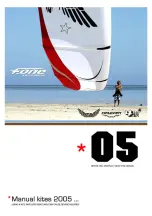
Motor Installation
The DA 50R features a rear induction carburetor that is intended to protrude or breath through
the fire wall. This carburetor location provides a stable air environment for consistent high
performance, while carburetor noise is greatly reduced. The width of the motor is also reduced
for tighter cowl installations.
•
The DA 50R can be mounted with or without the included stand-off spacer mounts.
The spacers are mounted to the motor mount flange tabs with steel M5 metric screws
(supplied). The rear of the stand-off mounts are threaded for ¼-20 SAE mounting
bolts (not supplied). The engine is mounted to the firewall with ¼-20 mounting bolts
that pass through the stand-offs from the rear of the firewall.
Note:
Export (Metric)
versions of the stand-off mounts are red color, and are threaded for M6 metric screws
at the rear.
•
We recommend blue Loctite on all engine mounting screws. Check the mounting bolts
regularly to insure they are tight.
•
Be very careful using shims or spacers behind the supplied stand-off mounts.
The rear face of each stand-off must be in the same plane. If they are not in the
same plane, the mounts and crankcase will be under stress. This can cause
damage to the engine, such as cracked/broken mounting tabs.
•
Make sure the carburetor has adequate clearance near the inlet to allow an
unobstructed airflow into the carburetor. If the carburetor is located in front of the
firewall, be sure there is at least 1” (25mm) of clearance from the carburetor inlet. If
there is less than 1” clearance, make a hole larger than the carburetor inlet diameter in
the firewall.
•
The throttle arm is tapped for a 2-56 SAE ball link. The spring tension on the DA 50R
carburetor is fairly light and most users will leave it as is. If you wish, the throttle return
spring can be released (not removed) off the end that hooks on the throttle spring
return arm. (Opposite side of the carburetor from the throttle arm)
NOTE:
Removing the throttle spring will allow the shaft to move and wear due to
vibration. This wear/damage will allow air and fuel to enter the engine when in the
closed position.
•
The throttle arm is attached firmly to the carb linkage with red Loctite. Removing it may
cause damage.
•
The choke lever can be actuated by finger or by a small servo behind the firewall.
Another option is to remove the choke arm and replace it with a nose wheel steering
arm (Goldberg or equivalent) this allows adjustment for linkage access from the
bottom or rear. Do not remove the detent ball and spring on the choke shaft.
•
Soft mounts can cause problems with exhaust systems and carburetor linkages.
•
Make sure the aircraft’s firewall and/or motor box are strong and secure.
2




























